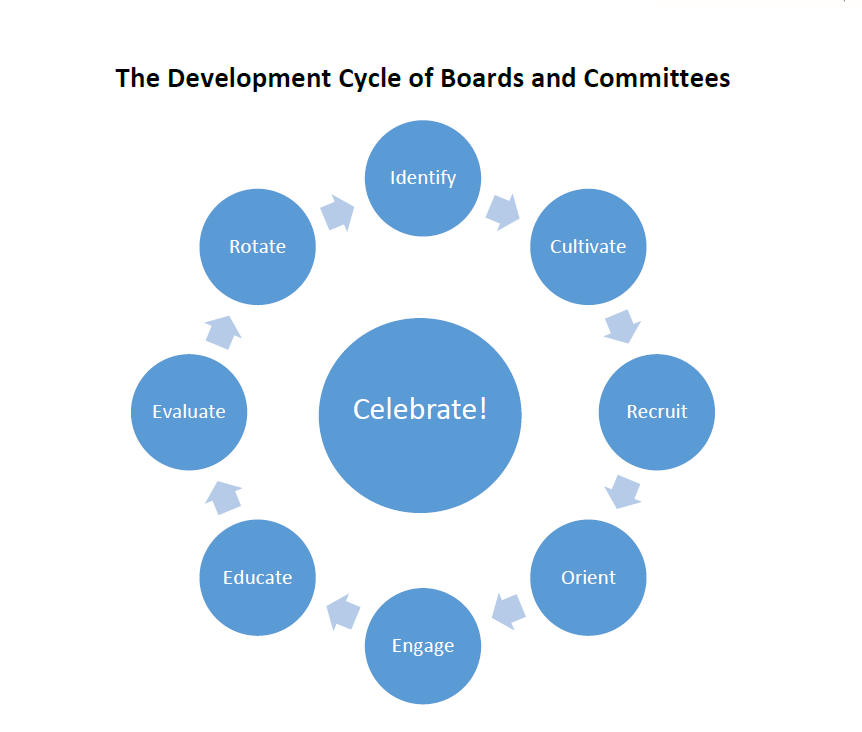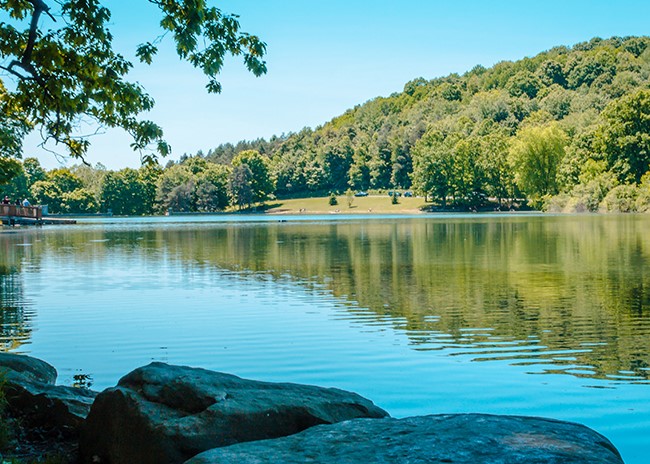Recruit, Engage, Renew, Repeat: Embracing the Board Development Cycle

~ by Steve Yoder, Community Development Regional Educator, Purdue Extension
I can’t resist a good presentation graphic. Whenever I find an illustration that nicely captures a thought, theme, or theory, I’m all over it. Of all the graphics that I use within Purdue Extension, this one is near the top of my list:

The Board Development Cycle is a terrific way to help a board, committee, or other community organization understand the steps needed to build an effective team of leaders. The graphic illustrates how boards undergo a continual cycle of recruitment, engagement, and renewal of membership. The most effective boards are aware of the importance of each of these steps and pay attention to them throughout the year. Less effective boards, on the other hand, may not fully understand what these steps are and often skip through, or completely ignore, some of them. Starting at the top of the image, and rotating though the cycle, the eight steps are:
- Identify the needs of the group (in terms of skills, knowledge, connections, etc.) as they relate to the needs of the community and the organization. This step does not yet consider individual names–rather, it considers the qualities and characteristics of potential members. What do we have? What is missing?
- Cultivate potential members. Ask current members of the group, as well as staff, volunteers, and others associated with the organization, to suggest potential names based on the needs identified in the first step. Find ways to connect with those candidates.
- Recruit Talk to them, share board member job descriptions and responsibilities, and don’t minimize expectations. Ask potential members to share what assets they could bring to the board.
- Orient new members both to the organization –its history, programs, pressing issues, finances, facilities, calendar of events, and organizational chart – and to the group – lists of members, meeting dates, etc. Review their roles and responsibilities once again. Orientation is the time to set the tone of expectations for service and involvement. Orientation can be a combination of online, in-person, and printed materials.
- Engage all members by facilitating effective meetings. Supply meeting agendas, ask for feedback to staff, and consider assigning mentors to newer members. Encourage involvement in the organization’s efforts, perhaps by helping with events.
- Educate members about the organization, as well as ways they can be more effective board members. Give them a “take-away” message at each meeting.
- Evaluate the effectiveness of the group through a regular self-assessment.
- Rotate members off the group, allowing new members to join. Review the nominating process, set term lengths and limits, and encourage the development of new leadership.
Throughout this cycle, make sure to celebrate the successes of the organization. Whether it’s in welcoming new members or acknowledging the legacy of those who are leaving, celebrations help keep the cycle going.
Over the years, I’ve shown this graphic to hundreds of Hoosiers who’ve taken part in Purdue Extension’s Community Leadership program. Each time this slide flashes on the screen, I also see figurative lightbulbs going off throughout the room. For some participants, it’s an eye-opener. People will comment that they’ve served on boards throughout their career and had never really thought about board service in this way—as a developmental process with identifiable steps that can make or break an organization’s effectiveness.


